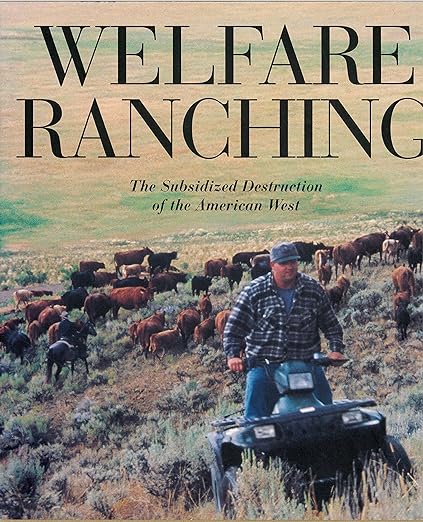Cattle
-
The sagebrush steppe dominates the drier parts of the West, including parts of Southeast Oregon, much of Nevada, southern Idaho, western Wyoming, western Colorado, western Utah, and parts of New Mexico. Sagebrush steppe covers 165 million acres of the West. Due to many factors, including farming, ranching, subdivisions, and, most importantly, range fires, sagebrush vegetation…
-
Impacts are Equal to Population multiplied by Tools multiplied by Energy available to drive those Tools Editors Note: The Wildlife News has a history of tackling difficult and sometimes uncomfortable or disturbing topics. This may be one for you… For those of us who care about our public lands and wildlife, we need to pull…
-
The BOSH project in southern Idaho ultimately plans to destroy tens of thousands of acres of juniper woodlands on BLM lands. BOSH stands for Bruneau-Owyhee Sagebrush Habitat Project. The advocates of the BOSH project use pejorative language to characterize the Juniper clearing from the landscape. Terms like “restoring” the “natural” condition of the land assume…
-
The seminal work on public lands livestock grazing and its web of impacts, Welfare Ranching – The Subsidized Destruction of the American West is now available for download.
-
A BLM (U.S. Bureau of Land Management) decision to allow livestock grazing to grow up to three times in the Owyhee Country of southwest Idaho has been blocked for now by a Dept. of Interior judge. Dickshooter Cattle Company, owned by J.R. Simplot an Idaho-based agricultural conglomerate, asked to increase cattle grazing by up to…
-
Lowery Ruins, part of the Canyon of the Ancients National Monument. Photo George Wuerthner Livestock grazing threatens the integrity of Colorado’s Canyon of the Ancients National Monument. Located in SW Colorado near Cortez, President Clinton established the 176,000 acre Monument in 2000 to protect one of the highest concentrations of archeological sites in the West…
-
Emigrant Peak and Yellowstone River in Paradise Valley. The East Paradise Grazing Decision will increase grazing by livestock on Emigrant Peak and adjacent areas of the Six Mile Creek drainage, an important area for wildlife. Photo George Wuerthner The Custer Gallatin National Forest (CGNF) recently released its decision on the future of six East…
-
The Elk Ridge Complex grazing allotments were closed to livestock grazing in 2015. Now the BTNF wants to open them to cattle grazing. Photo George Wuerthner The Bridger Teton National Forest (BTNF) has recently issued an Environmental Assessment to restock four vacant grazing allotments in the Upper Green River drainage north of Pinedale, Wyoming.…




